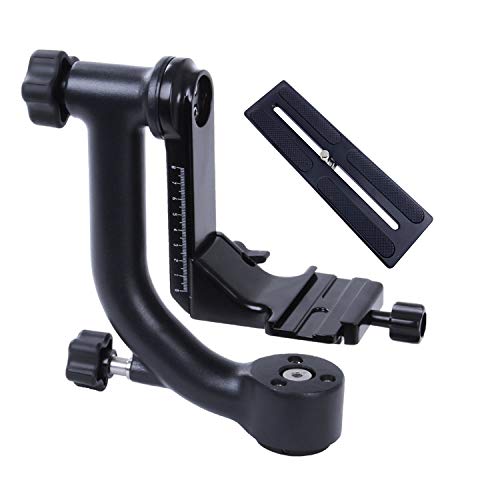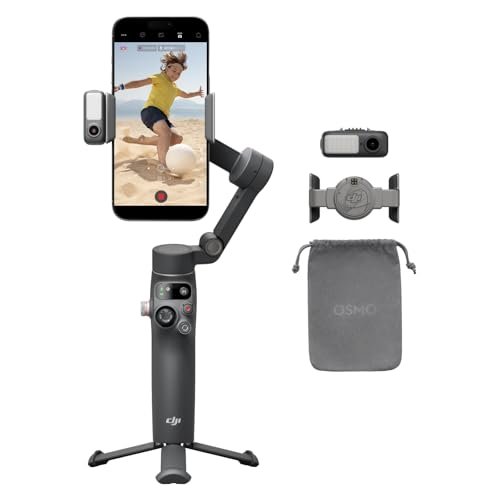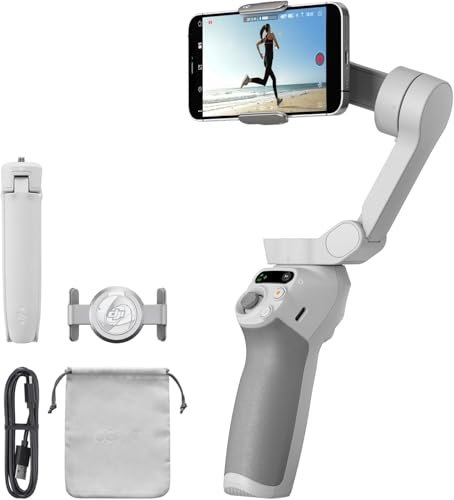Bird photography, with its fleeting moments and dynamic subjects, is perhaps one of the most challenging yet rewarding genres in the world of nature photography. To truly capture those stunning, tack-sharp shots of birds in flight or perched gracefully, you need gear that can keep up. That’s where a high-quality gimbal comes into play. It’s not just about steadying your camera; it’s about achieving that buttery-smooth tracking motion with heavy telephoto lenses, making the impossible seem effortless.
If you’re serious about your feathered friends and want to elevate your photography game, investing in the best gimbal for bird photography is a no-brainer. These specialized tripod heads are designed to support substantial weight while allowing your camera and lens to float, giving you the freedom to pan and tilt with remarkable ease.
Why a Gimbal is Your Wingman for Bird Photography
Imagine trying to handhold a massive 600mm lens for hours, tracking a swift-flying hawk. Your arms would give out, your shots would be shaky, and your frustration would soar higher than the bird itself! Gimbals solve this by:
- Effortless Tracking: They balance your camera and lens perfectly at their center of gravity, allowing fluid, friction-free movement. This is crucial for following fast-moving birds without jerking.
- Reduced Fatigue: Long lenses are heavy. A gimbal takes the weight off your arms, letting you shoot for extended periods without discomfort, meaning more opportunities to get that perfect shot.
- Superior Stability: While allowing movement, they also provide a stable platform, minimizing camera shake and helping you achieve sharper images, even with long exposures.
- Precision Control: You can make minute adjustments to your composition, ensuring the bird is perfectly framed within your shot.
It’s clear: if you’re wielding a telephoto lens for wildlife photography, particularly birds, a gimbal head isn’t a luxury; it’s an essential tool.
How to Choose the Best Gimbal for Bird Photography
Picking the right gimbal involves a few key considerations:
- Weight Capacity: Your gimbal must comfortably support the combined weight of your camera body and your heaviest telephoto lens. Always check the maximum load capacity.
- Build Material: Carbon fiber gimbals are lighter, which is great for portability, while aluminum options offer robust durability and often a lower price point.
- Smoothness of Movement: Look for precision bearings that allow for fluid panning and tilting with minimal effort. This is paramount for tracking.
- Arca-Swiss Compatibility: Most modern gimbals use Arca-Swiss style quick-release plates, ensuring broad compatibility with your existing camera gear.
- Portability: If you’re hiking to find your subjects, the gimbal’s weight and size matter.
Let’s dive into our top picks for the best gimbal for bird photography on the market right now.
Movo GH800 MKII Carbon Fiber Professional Gimbal Tripod

The Movo GH800 MKII stands out as a top-tier choice for serious bird photographers thanks to its premium carbon fiber construction. This material makes it incredibly strong yet surprisingly lightweight, a winning combination when you’re lugging heavy gear deep into the wilderness. Its design allows your camera and lens combo to achieve a “weightless” feel, enabling fluid, precise movements for capturing those split-second avian moments.
-
Key Features:
- FLUID PANNING & TILTING: Precision bearings make capturing a moving subject a breeze.
- SMOOTH “WEIGHTLESS” FLOW: Arca clamp & plate are horizontally & vertically adjustable to balance almost any camera & telephoto lens combination.
- HEAVY DUTY CONSTRUCTION: Superior carbon-fiber build easily supports up to 30 lbs (13.6kg), while gimbal head itself is relatively light at 2.75 lbs.
- EXCELLENT VALUE: Whether you’re a hobbyist or pro, this DSLR gimbal head is a wise quality investment.
- WARRANTY: 1 Year Movo Warranty with Fast & Friendly Support Based in the U.S.A.
-
Pros:
- Lightweight carbon fiber construction enhances portability.
- High load capacity (30 lbs) accommodates very large lenses.
- Exceptional smoothness for tracking fast-moving subjects.
- Arca-Swiss compatibility for versatile setups.
- Excellent balance system for heavy camera setups.
-
Cons:
- Premium carbon fiber can mean a higher price point than aluminum alternatives.
- May require a sturdy tripod (not included) to maximize stability.
-
User Impressions: Users frequently praise the GH800 MKII for its incredibly smooth operation and the robust yet light feel. Many comment on how it transforms their long-lens photography experience, making it less fatiguing and more enjoyable, leading to a higher keepers rate for action shots.
Movo GH700 Professional Gimbal DSLR Tripod Head with

The Movo GH700 offers a compelling aluminum alternative to its carbon fiber counterparts, providing robust support without breaking the bank. Don’t let the aluminum fool you; this gimbal head still delivers exceptional performance with its precision bearings, ensuring that tracking a bird in flight feels incredibly smooth and natural. It’s a fantastic option for photographers who need reliability and strength for their telephoto lenses without compromising on fluid motion.
-
Key Features:
- FLUID PANNING & TILTING: Precision bearings make capturing a moving subject a breeze.
- SMOOTH “WEIGHTLESS” FLOW: Arca clamp & plate are horizontally & vertically adjustable to balance almost any camera & telephoto lens combination.
- HEAVY DUTY CONSTRUCTION: Superior aluminum build easily supports up to 30 lbs (13.6kg), while gimbal head itself is relatively light at 2.75 lbs.
- EXCELLENT VALUE: Hundreds of reviews that speak for themselves. Whether you’re a hobbyist or pro, this DSLR gimbal head is a wise quality investment.
- WARRANTY: 1 Year Movo Warranty with Fast & Friendly Support Based in the U.S.A.
-
Pros:
- Very durable aluminum construction.
- Excellent 30 lbs weight capacity for heavy lenses.
- Smooth fluid movements for effective tracking.
- More budget-friendly than carbon fiber models.
- Lightweight for an aluminum gimbal, aiding portability.
-
Cons:
- Slightly heavier than carbon fiber options (though this model is noted as light for aluminum).
- Aluminum can feel colder to the touch in low temperatures.
-
User Impressions: Customers love the GH700 for its solid build quality and impressive performance, especially given its price point. Many reviews highlight its “smooth as butter” operation and the ability to handle large lenses with ease, making it a favorite for wildlife and sports photographers.
Movo GH700 MKII Professional Gimbal DSLR Tripod Head with

The Movo GH700 MKII is an updated iteration of the popular GH700, maintaining the robust aluminum construction but with slight refinements. It continues to deliver the precision and fluid motion crucial for capturing dynamic bird photography shots. With its ability to handle significant weight and its emphasis on smooth panning and tilting, this gimbal ensures your camera and telephoto lens are always perfectly balanced and ready to follow the action.
-
Key Features:
- FLUID PANNING & TILTING: Precision bearings make capturing a moving subject a breeze.
- SMOOTH “WEIGHTLESS” FLOW: Arca clamp & plate are horizontally & vertically adjustable to balance almost any camera & telephoto lens combination.
- HEAVY DUTY CONSTRUCTION: Superior aluminum build easily supports up to 30 lbs (13.6kg), while gimbal head itself is relatively light at 3.1 lbs.
- EXCELLENT VALUE: Whether you’re a hobbyist or pro, this DSLR gimbal head is a wise quality investment.
- WARRANTY: 1 Year Movo Warranty with Fast & Friendly Support Based in the U.S.A.
-
Pros:
- Robust aluminum construction ensures longevity.
- High 30 lbs load capacity for professional-grade lenses.
- Excellent balance and smooth operation for tracking.
- Good value proposition for its performance.
-
Cons:
- Slightly heavier than its sibling, the GH700 (3.1 lbs vs 2.75 lbs).
- Aluminum construction means it’s not as lightweight as carbon fiber options.
-
User Impressions: Users report that the GH700 MKII is a workhorse, offering reliable and consistent performance. They appreciate its sturdy feel and the ease with which it allows them to manipulate heavy camera setups, making it a go-to choice for serious photographers who spend hours in the field.
PROAIM Overhead 12ft Modular Studio Rig for

Important Note: While the prompt requested a review of this product, it’s crucial to clarify that the PROAIM Overhead Modular Studio Rig is not a traditional gimbal head designed for field-based bird photography with telephoto lenses. This system is purpose-built for overhead, studio, or controlled environment shooting, offering a unique “bird’s eye view” of stationary subjects or controlled action. If your bird photography involves capturing nests from above in a controlled setting (e.g., educational filming) or studio work with taxidermy birds, this might offer a specialized solution. However, for tracking birds in flight or in their natural habitat from a distance, this is not the appropriate tool.
-
Key Features:
- Stable Overhead Shooting Platform: PROAIM Overhead Camera Rig provides a stable platform for capturing overhead shots, offering a unique bird’s eye view of the action.
- Versatile Rail Lengths: High-quality aluminum rails can be set up at 4, 8, and 12′ lengths, ideal for smaller/larger spaces.
- Accessory Spacers: The included end spacers and accessory spacers feature 1/4″-20 & 3/8″-16 mounting threads, allowing you to attach a variety of accessories.
- Complete Rigging System: The rig comes with a 3″ riser and a ball head featuring a quick-release plate, allowing for flexible camera positioning at the desired angle.
- Includes Bag; 100% Customer Satisfaction Guarantee; Buy with Confidence.
-
Pros:
- Excellent for stable, overhead studio shots.
- Modular design allows for various lengths and configurations.
- Plenty of mounting points for accessories.
- Comes with a ball head and quick-release plate.
-
Cons:
- Not suitable for traditional field bird photography (tracking, long lenses outdoors).
- Requires a controlled environment for setup and use.
- Large and cumbersome for portable outdoor use.
- Its primary function differs significantly from a gimbal head.
-
User Impressions: Users who purchase this rig for its intended purpose (studio, product, or overhead video work) highly rate its stability and modularity. They appreciate the flexibility it offers for unique camera angles in a controlled setting.
Movo GH800 Carbon Fiber Professional Gimbal Tripod Head

The Movo GH800 Carbon Fiber Gimbal Tripod Head is another excellent contender for the title of best gimbal for bird photography, offering the lightweight advantage of carbon fiber without compromising on strength. This original GH800 model is known for its ability to handle heavy camera and lens combinations with ease, providing the smooth, effortless movement vital for capturing fast-paced wildlife. Its robust construction and precision engineering make it a reliable partner for any serious nature photographer.
-
Key Features:
- FLUID PANNING & TILTING: Precision bearings make capturing a moving subject a breeze.
- SMOOTH “WEIGHTLESS” FLOW: Arca clamp & plate are horizontally & vertically adjustable to balance almost any camera & telephoto lens combination.
- HEAVY DUTY CONSTRUCTION: Superior carbon-fiber build easily supports up to 30 lbs (13.6kg), while gimbal head itself is relatively light at 2.75 lbs.
- EXCELLENT VALUE: Hundreds of reviews that speak for themselves. Whether you’re a hobbyist or pro, this DSLR gimbal head is a wise quality investment.
- WARRANTY: 1 Year Movo Warranty with Fast & Friendly Support Based in the U.S.A.
-
Pros:
- Lightweight carbon fiber design for easy transport.
- High 30 lbs capacity handles almost any telephoto lens.
- Remarkably smooth and fluid motion for tracking.
- Durable construction built to last in outdoor conditions.
- Proven performance with many positive user reviews.
-
Cons:
- Carbon fiber models typically come at a higher price.
- Requires a sturdy tripod base (not included).
-
User Impressions: This gimbal is consistently praised by users for its stability, lightweight nature, and especially its incredibly smooth operation. Many photographers attest to its ability to make their heavy lenses feel weightless, greatly enhancing their ability to track and capture sharp images of birds and other wildlife.
FAQs About Gimbals for Bird Photography
Q1: What’s the main difference between a gimbal head and a ball head for bird photography?
A1: A ball head locks your camera firmly in place, but adjusting it means loosening, repositioning, and tightening, which is difficult for moving subjects. A gimbal head, on the other hand, perfectly balances your camera and lens, allowing for incredibly smooth, fluid panning and tilting motion with minimal effort, ideal for tracking fast-moving birds.
Q2: Do I really need a gimbal if I already have a good tripod?
A2: Yes, absolutely! A gimbal head isn’t a replacement for a tripod; it’s an attachment that sits on top of your tripod. While a good tripod provides stability, it’s the gimbal head that provides the specialized fluid motion and balance necessary for comfortable and effective long-lens bird photography.
Q3: What weight capacity should I look for in a gimbal?
A3: You should look for a gimbal that can comfortably support the combined weight of your heaviest camera body and telephoto lens. For most professional setups, a capacity of 25-30 lbs (around 11-13.6 kg) is a good benchmark to ensure stability and smooth operation.
Q4: Is carbon fiber or aluminum better for a gimbal head?
A4: Both materials have their merits. Carbon fiber gimbals are significantly lighter, making them easier to carry on long hikes, but they typically cost more. Aluminum gimbals are often more affordable and incredibly durable, though they tend to be a bit heavier. Your choice depends on your budget and how important portability is to you.
Q5: How do I balance my camera and lens on a gimbal?
A5: Balancing your setup on a gimbal involves adjusting the quick-release plate forwards/backwards and the arm up/down until your camera and lens combination stays exactly where you put it without falling forwards, backwards, up, or down. When perfectly balanced, your setup should feel virtually weightless and effortlessly glide in any direction.
Q6: Can I use a gimbal for video recording of birds?
A6: Yes, a gimbal head is excellent for video recording of birds, especially when using long telephoto lenses. The smooth, fluid movements it allows are perfect for tracking subjects and achieving professional-looking cinematic shots without jerky movements.
Q7: Are all gimbals Arca-Swiss compatible?
A7: Most high-quality gimbal heads today come with Arca-Swiss compatible clamps and plates, which is an industry standard for quick-release systems. However, it’s always wise to double-check the product specifications to ensure compatibility with your existing camera plates and accessories.
Final Feathered Thoughts
Choosing the best gimbal for bird photography can dramatically transform your ability to capture stunning wildlife images. It takes the strain out of handling heavy gear and puts precise, fluid control literally at your fingertips. Whether you opt for the lightweight prowess of carbon fiber or the robust value of aluminum, any of the Movo gimbal heads reviewed here will be a game-changer for your birding adventures. Remember, the right gear frees you up to focus on what truly matters: getting that incredible shot.


